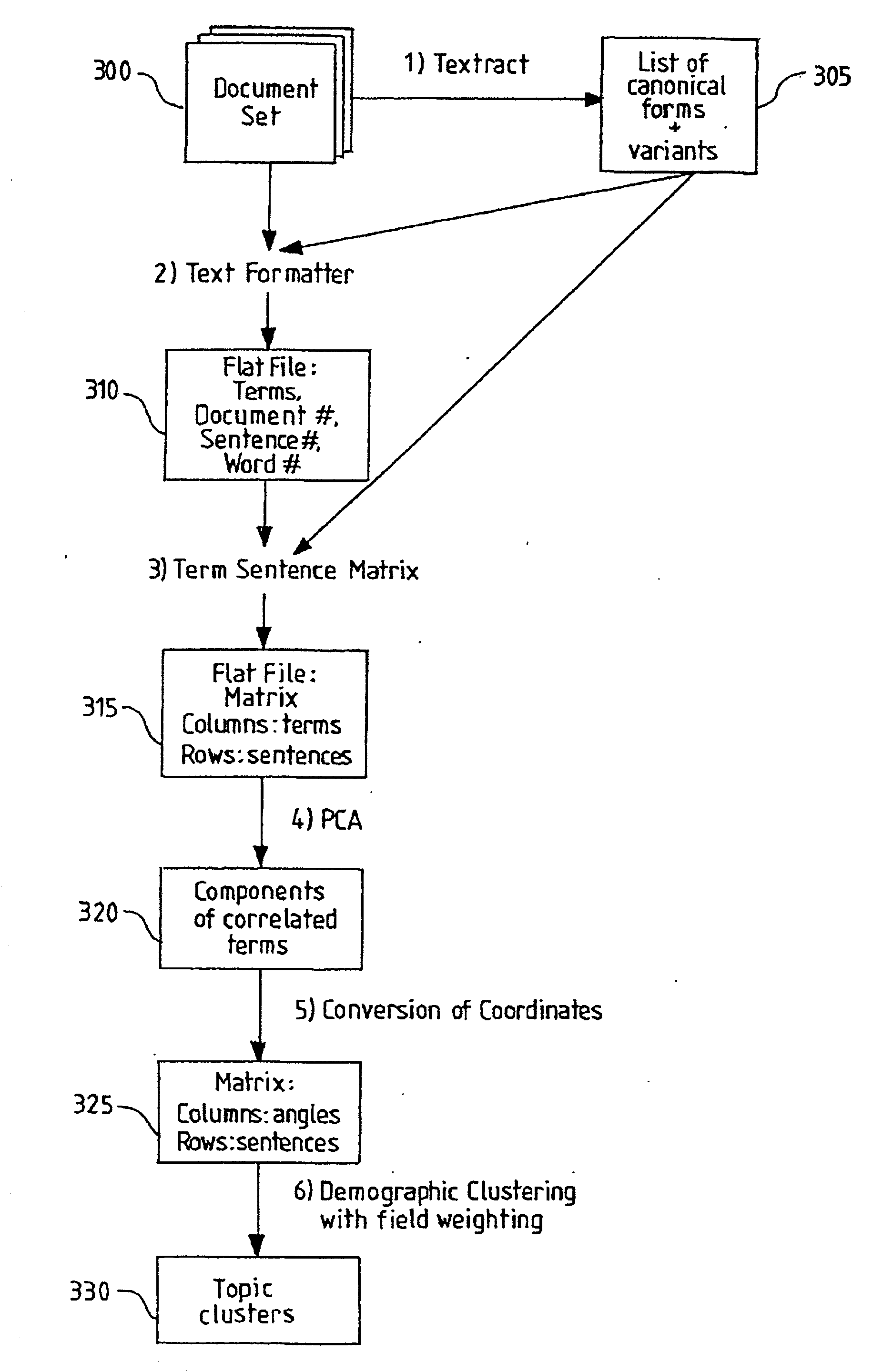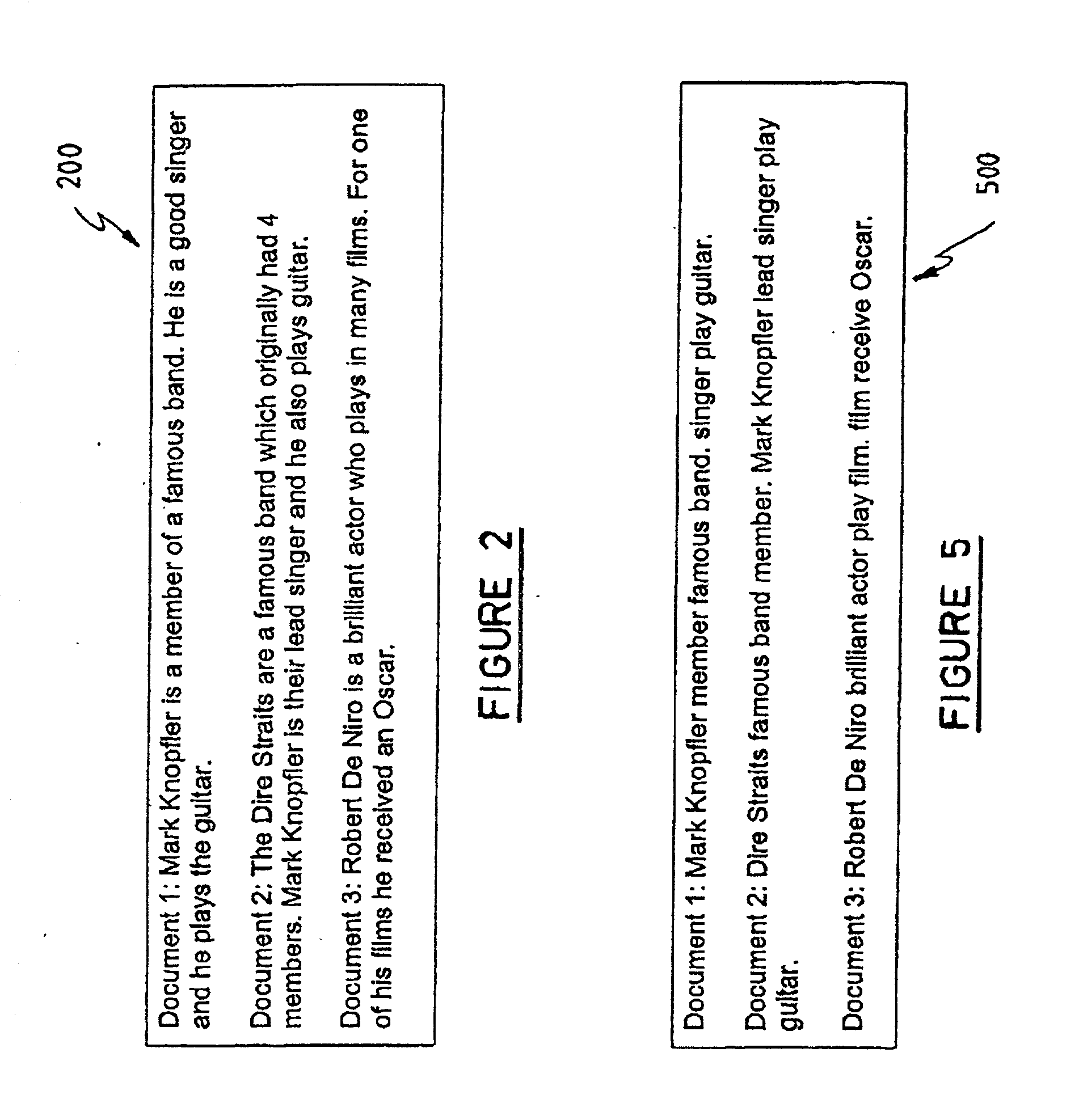Automatically summarising topics in a collection of electronic documents
a technology of electronic documents and topics, applied in the field of automatic discovery and summarising of topics in electronic documents, can solve the problems of inability to show how the documents are related to one another, laborious for a user to find relevant information, and difficult task of traversing electronic information
- Summary
- Abstract
- Description
- Claims
- Application Information
AI Technical Summary
Problems solved by technology
Method used
Image
Examples
Embodiment Construction
[0039] FIG. 1 is a block diagram of a data processing environment in which the preferred embodiment of the present invention can be advantageously applied. In FIG. 1, a client / server data processing apparatus (10) is connected to other client / server data processing apparatuses (12, 13) via a network (11), which could be, for example, the Internet. The client / servers (10, 12, 13) act in isolation or interact with each other, in the preferred embodiment, to carry out work, such as the definition and execution of a work flow graph, which may include compensation groups. The client / server (10) has a processor (101) for executing programs that control the operation of the client / server (10), a RAM volatile memory element (102), a non-volatile memory (103), and a network connector (104) for use in interfacing with the network (11) for communication with the other client / servers (12, 13).
[0040] Generally, the present invention provides a technique in which data mining techniques are used t...
PUM
 Login to View More
Login to View More Abstract
Description
Claims
Application Information
 Login to View More
Login to View More - R&D
- Intellectual Property
- Life Sciences
- Materials
- Tech Scout
- Unparalleled Data Quality
- Higher Quality Content
- 60% Fewer Hallucinations
Browse by: Latest US Patents, China's latest patents, Technical Efficacy Thesaurus, Application Domain, Technology Topic, Popular Technical Reports.
© 2025 PatSnap. All rights reserved.Legal|Privacy policy|Modern Slavery Act Transparency Statement|Sitemap|About US| Contact US: help@patsnap.com



